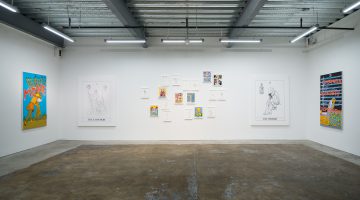Eleanor Coppola: “Scrolls”
April 10-May 4, 2013
Gallery Paule Anglim
14 Geary Street
San Francisco, CA
-by John Held, Jr.

Eleanor Coppola
Saboru 1 (detail), 2013.
Archival pigment print on Optica paper.
Courtesy Gallery Paule Anglim
There is amble justification in associating author, filmmaker, set designer, installation artist, and photographer Eleanor Coppola with Gallery Paule Anglim, which represents many of the finest conceptual artists in the Bay Area. Raised in Southern California, a graduate of UCLA, Coppola later attended the San Francisco Art Institute, and teamed up with fellow Gallery Anglim artist Lynn Hershman in the early 1970s, in “The Dante Hotel,” which presented site –specific artworks in a residential hotel. Part of Coppola’s work had poet Tony Dingman ensconced in a room, documenting the subtle shifts of his living arrangement over time. In a note pinned to a mirror, Coppola wrote, “I realize that I want to aestheticize all kinds of ordinary acts…elevate them to consciousness, therefore art…”

Eleanor Coppola, Saboru 5, 2013.
Archival pigment print on Optica paper. 61” x 25”
Courtesy Gallery Paule Anglim
In her current exhibition at Gallery Paule Anglim, Coppola photographs the understated variations of her Napa Valley environment. In a 2011 interview, she stated that, “I have a quiet kind of demeanor so as not to disturb the process going on around me, while standing in the center of it, getting the work done.” Fallen leaves, the wafting of fog, impressions of momentary moisture on a cement patio are captured and retained as instants of fluidity preserved as poetic interludes. Each of the digital pigment prints are given the same series title, “Saboru,” a Japanese word meaning “truant,” a person skipping school, and by extension, one not afraid to break accepted rules.

Eleanor Coppola, Saboru 3, 2013.
Archival pigment print on Optica paper. 61” x 25”
Courtesy Gallery Paule Anglim
The metaphorical associations with Japanese culture extend to the presentation of the works on five foot printed scrolls. Whereas the traditional Japanese scroll would incorporate a calligraphic landscape, here a photograph subverts the viewer’s expectation. The printing on bright white paper is subtle and unobtrusive, transferring not only the photograph but also an all-over soft pastel haze bringing the image into harmony with the entire construction.
Visitors to Japan are often struck with the most ordinary of objects, say a melon, wrapped in luxurious packaging. A recent guest from Japan presented me with some red bean candy concealed in a beautiful box, whose pleasure has lasted long after the final consumption of the edible centerpiece. Another intricate part of Coppola’s presentation is a box engraved with her name, in which to place the scroll for easy transport.

Eleanor Coppola, Saboru 10 (detail), 2013.
Archival pigment print on Optica paper.
Courtesy Gallery Paule Anglim
Portability assumes an important aspect of the conceptual framework. Falling leaves, a car’s headlights breaking through the mist, turkey tracks left in concrete, meandering cattle –all transposed against a backdrop of serenity and stillness. The work itself can be taken anywhere, from room to room, or perhaps, owing to the artists’ frequent travel, from hotel to hotel. And like red bean sweets that have been savored and consumed, the artwork can be safely stored in it’s protective casing, enjoyed in a transformative state, waiting one day to again see the light.
For more information visit here.
All images Courtesy Gallery Paule Anglim.




